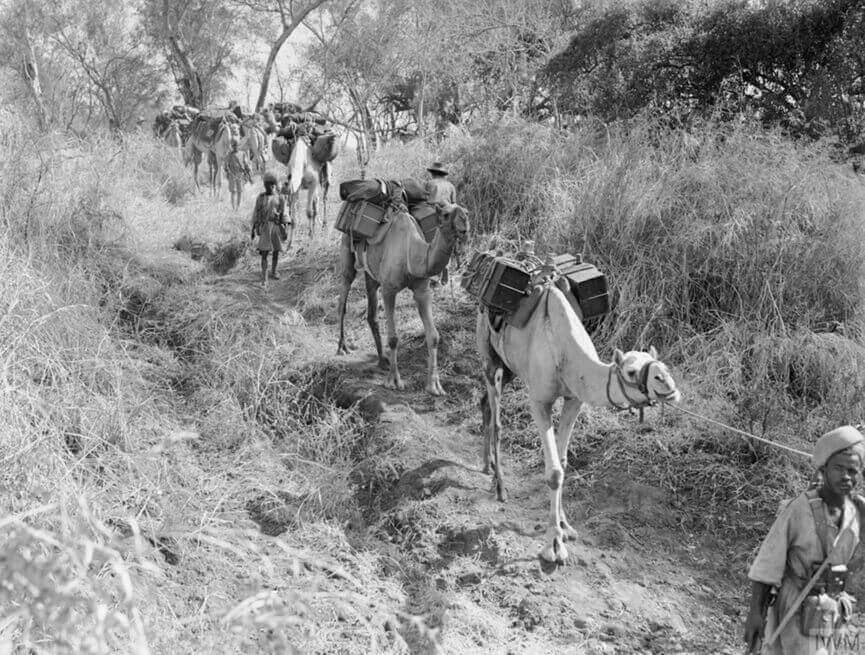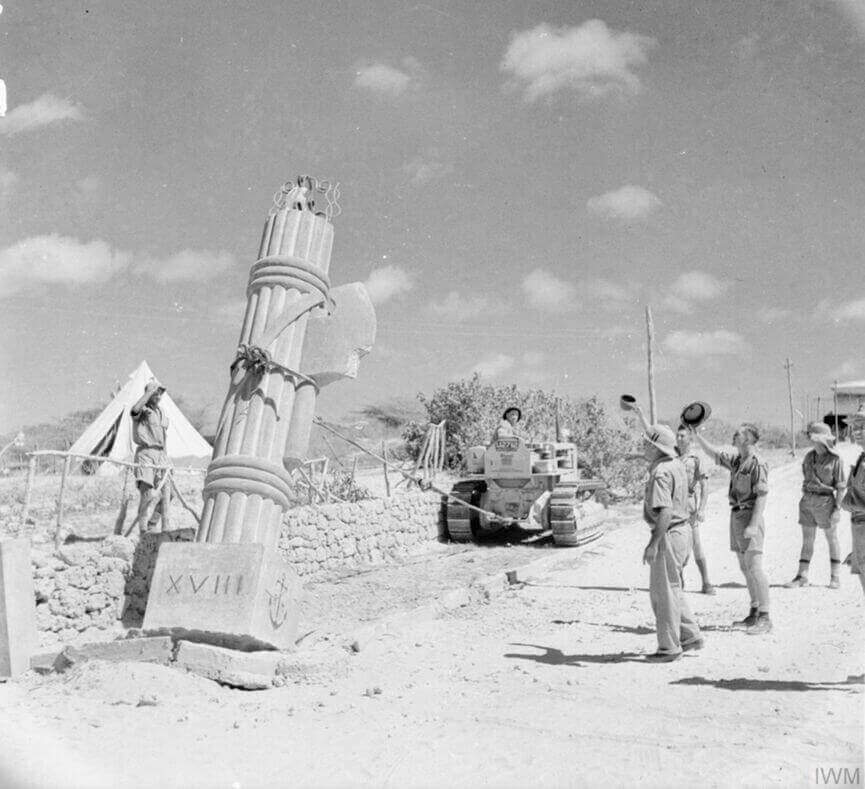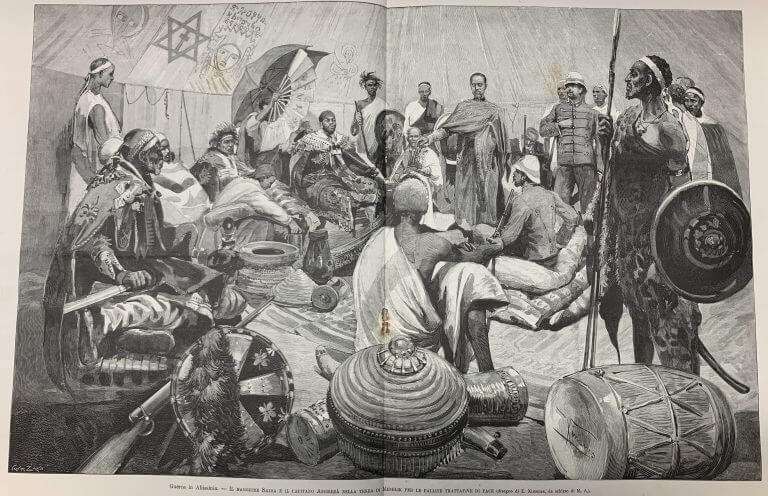 In October 1935 Italian troops invaded Ethiopia – then also known as Abyssinia – forcing the country’s Emperor, Haile Selassie, into exile. Ignoring protests from the League of Nations, the Italian dictator Benito Mussolini proclaimed a new Italian empire in East Africa, comprising Ethiopia and the pre-existing territories of Italian Somaliland and Eritrea.
In October 1935 Italian troops invaded Ethiopia – then also known as Abyssinia – forcing the country’s Emperor, Haile Selassie, into exile. Ignoring protests from the League of Nations, the Italian dictator Benito Mussolini proclaimed a new Italian empire in East Africa, comprising Ethiopia and the pre-existing territories of Italian Somaliland and Eritrea.
Following early successes by Italy’s ally, Germany, in the Second World War, Mussolini declared war on Britain in June 1940. This meant that British possessions in East Africa, as well as British-controlled Egypt and the vital supply route of the Suez Canal, were now threatened.
The Italians attacked border posts in Kenya and Sudan, and captured British Somaliland in August. The Italian Viceroy, the Duke of Aosta, then ordered his troops to halt, allowing the initiative to pass to the British.
General Archibald Wavell, British Commander-in-Chief Middle East, planned a three-pronged counter-offensive to dismantle Italy’s East African Empire. His force was outnumbered, but he had air support from the Royal Air Force (RAF).
In January 1941 Lieutenant General William Platt led forces from Sudan into Eritrea. The Italians quickly retreated and, in March, Indian and British troops won an important victory at Keren.
THE ABYSSINIAN CAMPAIGN 1941
Ethiopian camel troops transporting supplies through the bush, 22 January 1941.

Meanwhile, Lieutenant General Alan Cunningham advanced north from Kenya into Italian Somaliland, while a third force crossed from Aden to retake British Somaliland by amphibious assault. These then linked up and pushed deep into Ethiopia.
ETHIOPIA DURING THE SECOND WORLD WAR
Ethiopian men gather in Addis Ababa, heavily armed with captured Italian weapons, to hear the proclamation announcing the return to the capital of the Emperor Haile Selassie in May 1941.
In April British troops entered the capital Addis Ababa, and Haile Selassie returned in triumph on 5 May. The Duke of Aosta chose to fight on, and led his men to the mountain stronghold of Amba Alagi, near the Eritrean border. Here they held out for a further two weeks before surrendering.
THE CAMPAIGN IN EAST AFRICA 1941
British troops use a bulldozer to pull down a fascist stone monument at Kismayu in Italian Somaliland, 11 April 1941.

The last Italian troops in East Africa were defeated at the Battle of Gondar in November 1941. But several thousand escaped to wage a guerrilla war until September 1943, when Italy surrendered to the Allies.
The Battle of Gondar or Capture of Gondar was the last stand of the Italian forces in Italian East Africa during the Second World War. The battle took place in November 1941, during the East African Campaign. Gondar was the main town of Amhara in the mountains north of Lake Tana in Ethiopia, at an elevation of 7,000 ft (2,100 m) and had an Italian garrison of 40,000 men, commanded by Generale Guglielmo Nasi.
Once the Allied troops had taken the passes, they gained control of the heights overlooking Gondar and reached the town on 23 November. The garrison of Gondar was seriously depleted, since many Askari, having gone unpaid by the Italians, had deserted. The final assault on Gondar, where Nasi had his headquarters, started at 5:30 a.m. on 27 November. The Azozo airfield was the initial objective; it was captured by midday of 27 November and shortly afterwards, Commonwealth troops reached Fasilides’ Castle.[13] At 4:30 p.m., while the Kenya Armoured Car Regiment penetrated the outskirts of the town, Nasi sent his last message to Italy, explaining that the reserve brigade had been deployed on the southern front but had been unable to stop the attack, that enemy troops had passed the barbed wire and enemy armoured vehicles had entered the town. Nasi surrendered soon after.[9][4] Some Italian outposts fought on until 30 November, marking the end of the battle.
Source- Imperial War Museums
















